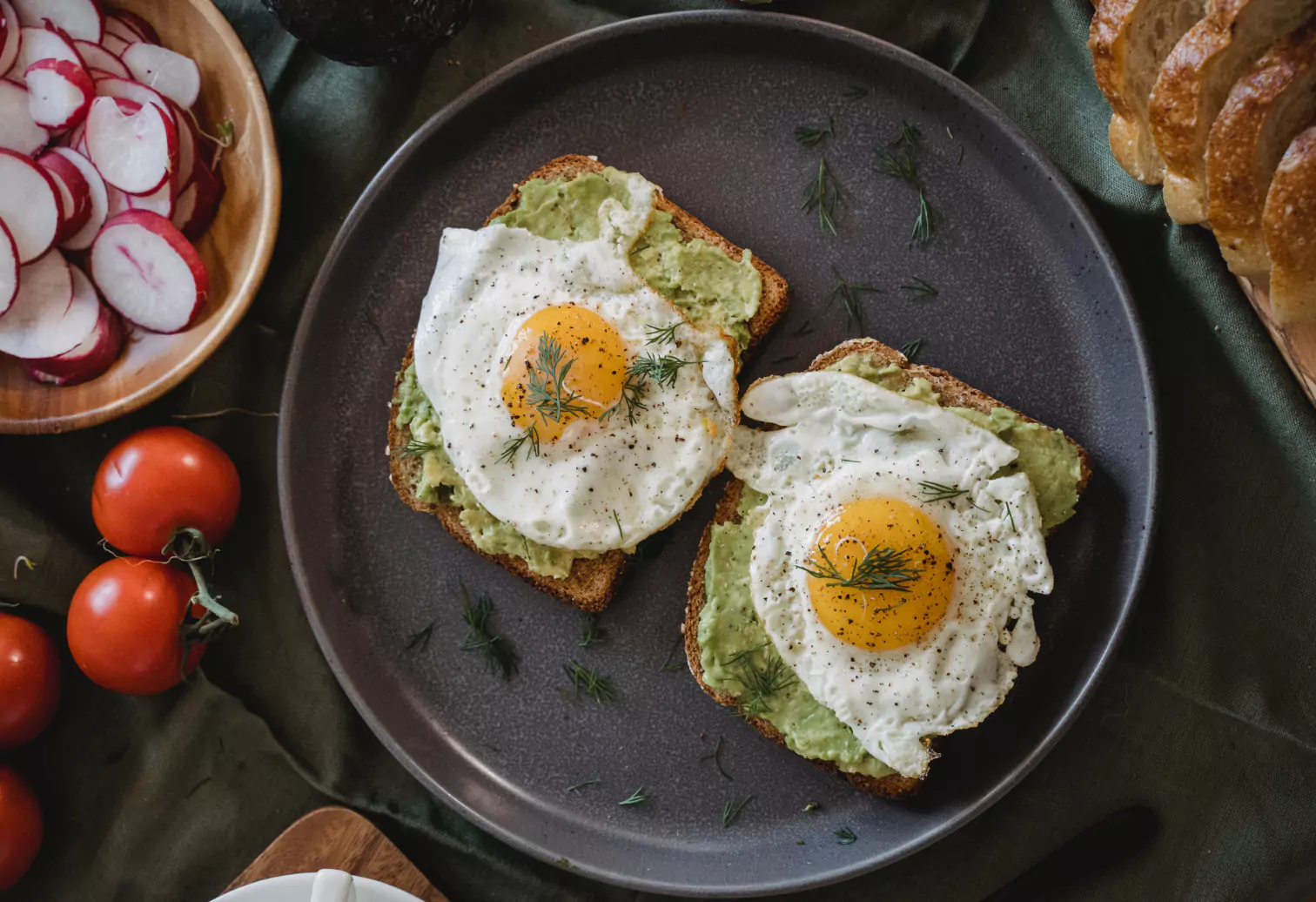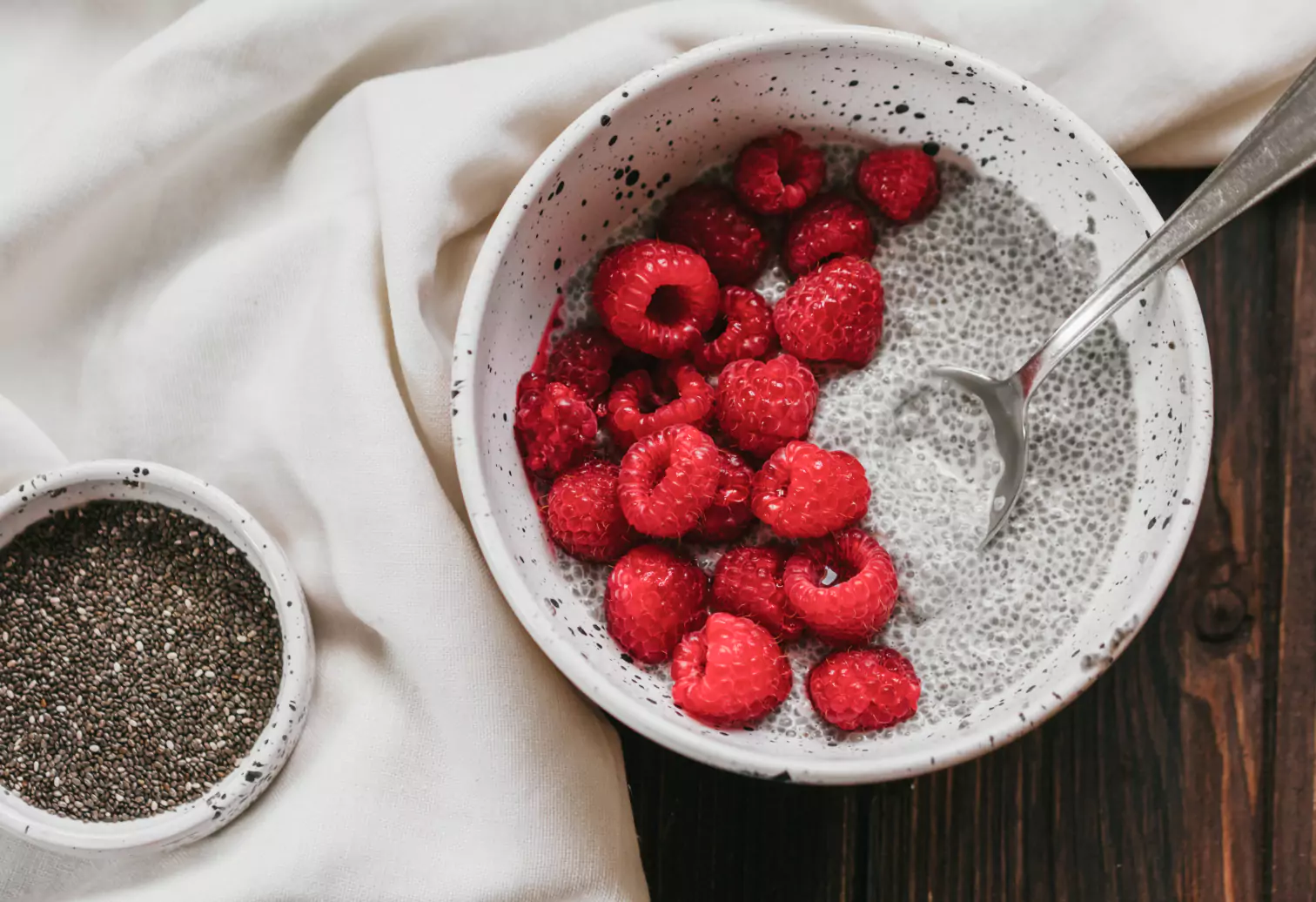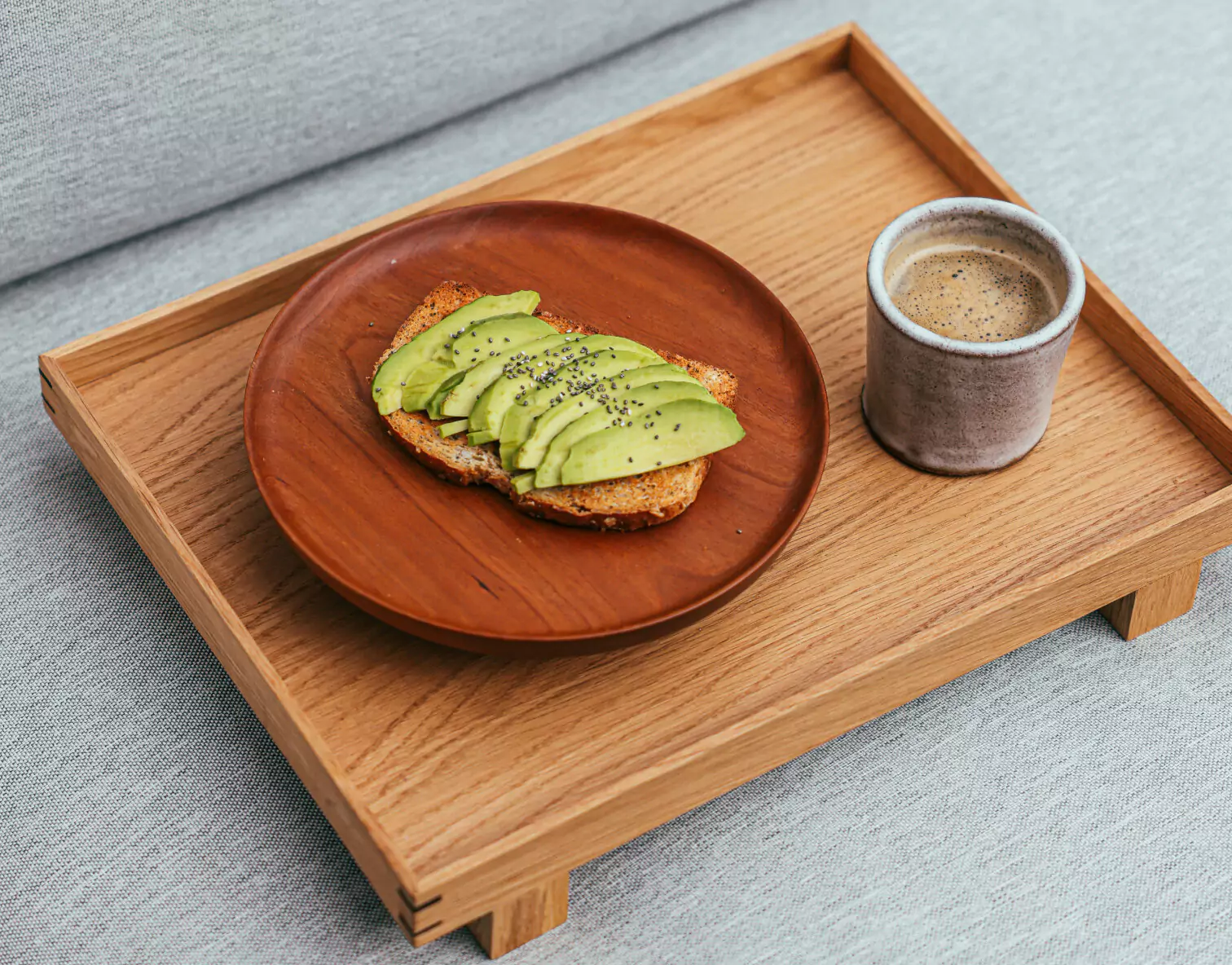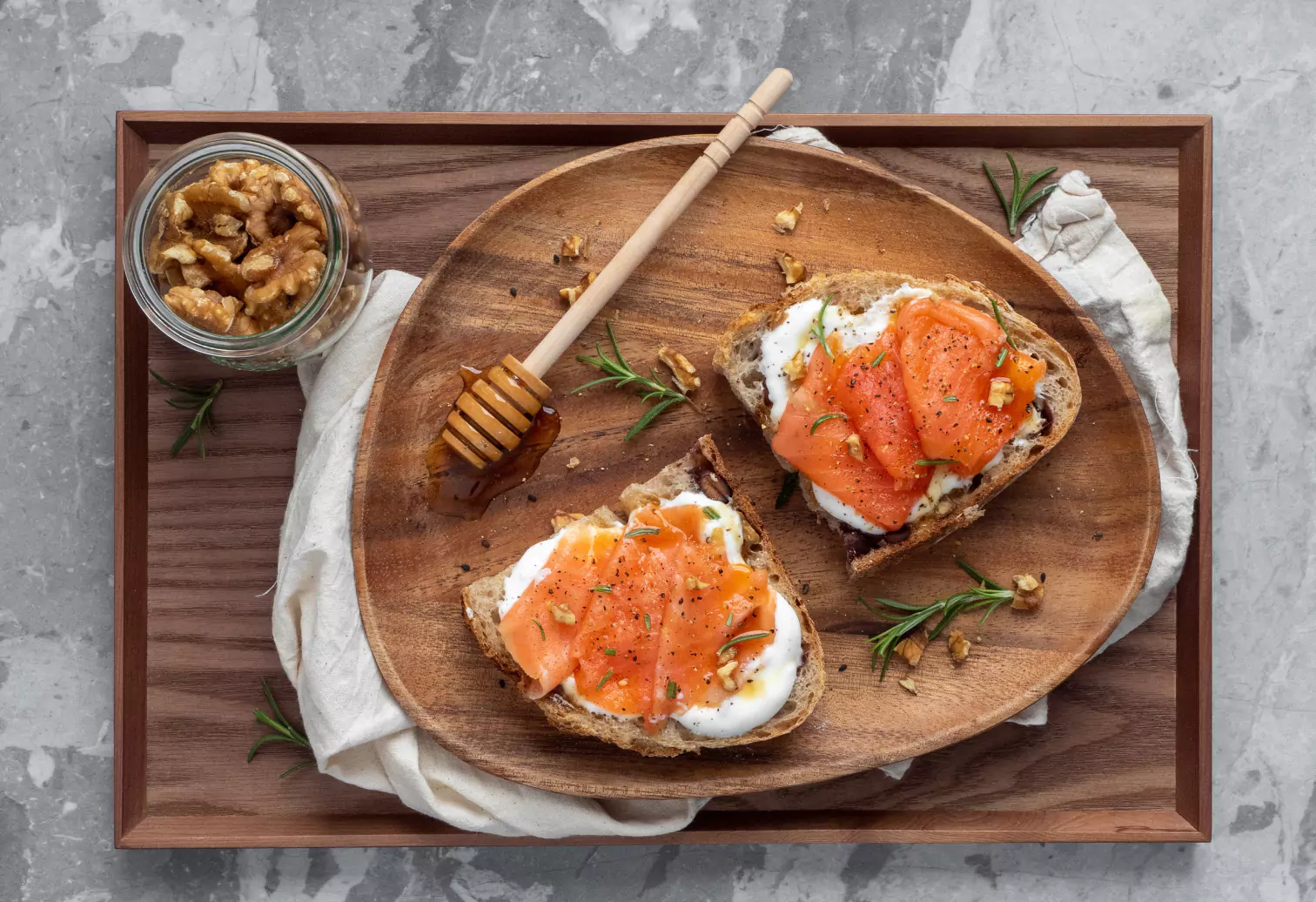
Key Takeways
Monitoring and tracking your blood glucose levels can feel challenging, but it doesn't have to be. One of the best ways to avoid blood sugar spikes is to tweak your diet and lifestyle, and a healthy breakfast is a significant part of that.
Properly breaking your fast is vital for many reasons, including to help control your blood glucose levels. Making sure you start your day with stable blood sugar levels can set you up for success and allow you to have a productive day. A healthy breakfast is a great place to start.
Why is this so important? Every time you eat a meal or a snack, your body breaks down the food, and sugars and other nutrients enter your blood vessels as a source of energy. After eating a carbohydrate-containing meal, your glucose levels will likely rise. This isn't a bad thing—it's normal to see glucose levels fluctuate—but it can be problematic if your glucose rises to a high level.
It's more concerning for people with diabetes, whose bodies find it more challenging to deal with high blood glucose. However, monitoring blood sugar spikes benefits everyone, highlighting the importance of diligent tracking for both people with diabetes and people without diabetes.
The good news is that some foods can help control blood sugar levels within a healthy range, especially at the beginning of your day. Are you stumped for healthy breakfast ideas? We're here to help out.
Here are some of the best breakfast foods to control or even lower blood sugar levels and a few recipes to help you get started.
1) Eggs

It's not surprising to see eggs on this list. Eggs are a good source of protein, which should be part of every healthy meal, including breakfast.
You may have heard that increasing the proportion of protein in your diet can help blood glucose control. And research backs it up. According to a study published in The American Journal of Clinical Nutrition, eating more protein is associated with an improved blood glucose response in those who have type 2 diabetes.
A 2023 study published in Nutrients found that adults who consumed at least five eggs throughout the week had a lower risk of prediabetes and type 2 diabetes.
Of course, remember that eggs may not suit some people as well as others. f you can tolerate eggs, consider adding one to your healthy breakfast for a good dose of protein with one of our favorite egg recipes.
Avocado Egg Toast Breakfast Recipe to Try
Eggs are substantial enough to keep you feeling full for hours. They go with various breakfast foods—toast comes to mind immediately. We love this low-calorie recipe for Avocado Egg Toast from Eating Well.
It uses a quarter of an avocado, a quarter teaspoon of ground pepper, one-eighth a teaspoon of garlic powder, and a fried egg atop a slice of whole-wheat or whole-grain toast garnished with one tablespoon of chopped scallions and a smidge of Sriracha. The mouthwatering dish is also low in added sugars, making it a great addition to your first meal of the day.
2) Yogurt

You likely know that dairy can impact blood glucose, but how do fermented dairy products affect your blood sugar, and what about yogurt in particular? Many connect eating fermented foods such as yogurt and cottage cheese with decreasing diabetes risk, but there's more to the conversation.
According to internal medicine physician Dr. Kelvin Fernandez, "plain Greek yogurt, often recommended for morning blood sugar management, is beneficial because it's high in protein and probiotics, which can support healthy gut bacteria and insulin sensitivity. Combining Greek yogurt with a serving of nuts or seeds can provide a balanced, low-glycemic breakfast conducive to stable blood sugar levels."
What has been observed is that while there's no strong correlation between fermented dairy products (in general) and diabetes, the risk is lower specifically for yogurt. The information comes from a study by researchers from the Harvard School of Public Health, but research is still ongoing.
From the research there is on the subject, yogurt can be a good candidate for a healthy breakfast and may help regulate blood sugar levels. So, it's good to have a cup of low-carbohydrate, high-protein fermented food for breakfast, especially if you're looking to control your blood glucose. Just make sure that the kind you're eating doesn't have added sugars. If you need to sweeten up your yogurt, consider some slices of fibrous fresh fruit instead.
Very Berry Breakfast Yogurt Recipe to Try
If you've been longing for something simple to make and delicious to eat, look no further than this Mixed Berry Smoothie from nutritionist Jill Weisenberger. You'll need a cup of frozen mixed berries, a cup of nonfat yogurt (you can also try Greek yogurt if you prefer that), and one tablespoon of the sweetener of your choice.
You also need two tablespoons of tart juice like cranberry, pomegranate, or cherry. This can make it higher in sugar, so it may be good to consider this an optional ingredient.
Apart from being quick to whip up, this recipe is extra helpful if you want to control your blood sugar levels. Both berries and yogurt can have positive effects on glycemic and lipid profiles. If you're looking for more fibers, you may want to add a little steel-cut oats as toppings.
3) Chia Seeds

High-fiber foods can help mitigate glucose responses, and chia seeds are a good example. They are rich in protein, antioxidants, healthy fats, and fatty acids like omega-3s, all nutrients linked in some way or other with better blood glucose control.
Their soluble fiber and mucilage—the thick, gluey substance you see materialize when chia seeds are moistened—can help slow down digestion and lower LDL cholesterol.
One small study, published in a journal called Nature, found that eating bread incorporated with either whole or grounded chia seeds helped reduce blood glucose levels in healthy adults.
Another bit of research, a double-blind, placebo-controlled, randomized study also published in Nature, observed “significantly lower blood glucose levels” in healthy adults from consuming chia seed bread.
Chocolate Chia Seed Pudding Breakfast Recipe to Try
Adding chia seeds to your breakfast is an excellent option for controlling blood sugar spikes. So, dip a spoon into this delicious Chocolate Chia Seed Pudding with Almond Milk from Diabetes Strong.
For this yummy breakfast option, you'll need half a cup of chia seeds, one and one-third cups of unsweetened almond milk, one-third cup of cocoa powder, four tablespoons of the sweetener of your choice, and a three-fourth teaspoon of salt. It's high in polyunsaturated fat, protein, and fiber.
4) Whole Grain Avocado Toast

There's a connection between eating bread and your glood glucose levels—though the type of bread you eat matters too. White bread tends to be high in fast digesting carbs and low in fiber; it has a higher glycemic index (GI) and can cause significant changes in blood sugar.
However, whole-grain bread is higher in fiber and has lower GI values, making it a better option when focusing on controlling blood sugar levels. But it's not as simple as switching to whole wheat bread.
Many types of bread marketed as “whole grain” may include whole grains only in the crust, while most of the bread has refined white flour. So make sure you know what you're getting when you pick something off the supermarket shelf. Remember to read the nutritional facts labels and look for 100 percent whole-grain bread.
Avocados are rich in monounsaturated fats which seem to play a role in the healthy functioning of the heart and circulatory system. Researchers have found that including monounsaturated fats in your diet could improve glycemic control, especially in people with type 2 diabetes.
Tasty Breakfast Avocado Toast Recipe to Try
This super simple recipe from Diabetes Food Hub should allow you to have the right start to your day. The Avocado Toast with Turkey Bacon and Tomato recipe comes from the nutrition experts at the American Diabetes Association.
To make this healthy breakfast, you'll need two slices of lean turkey bacon, half an avocado, two slices of bread, a pinch each of salt and black pepper, and one plum tomato. Always choose 100 percent whole grain bread for the recipe and try to find nitrate-free turkey bacon.
5) Low-Glycemic Smoothie

A smoothie can be a great way to pack a lot of nutrients into a convenient drink. The key to a smoothie's nutrient-density, however, lies in the ingredients. For example, using whole fruit instead of fruit juice is a must. That’s because whole fruit provides more fiber than fruit juice, which is important for balancing glucose.
Beyond fruit, other ingredients can enhance the nutrient profile of a smoothie. Protein sources like whey protein, plain Greek yogurt, and hemp seeds, offer a glucose-balancing effect and can help you feel fuller for longer. Healthy fats, like chia seeds and flaxseeds, are also great smoothie additions!
One thing to watch out for in any smoothie recipe is the presence of added sugars, like maple syrup and honey. Yes, these are considered added sugars! Instead, try using natural sources of sweetness like a banana or a handful of berries.
Breakfast Berry Blast Smoothie Recipe to Try
This simple 120-calorie recipe from Cook Gem would make an excellent addition to any breakfast table. To whip it up, you need one cup of unsweetened almond milk, one teaspoon of lemon juice, one cup of baby spinach, half an avocado, one cup of blueberries, half a cup of strawberries, and one tablespoon of hemp seeds.
A pinch of cinnamon will give your drink a mellow flavor profile. You can also modify this to suit your tastes. For example, you could use kale instead of spinach, or blackberries instead of blueberries.
6) Veggie Omelet

We've seen how eggs can be good for controlling blood glucose levels. And they're even better when whipped up into a vegetable omelet, adding tasty and nutrient-dense veggies to the mix.
Most non-starchy and leafy green vegetables are glucose-friendly. These include carrots, broccoli, cauliflower, spinach, tomatoes, mushrooms, and asparagus.
Garden Veggie Omelet Breakfast Recipe to Try
A veggie omelet with simple garden vegetables is our pick for a delicious savory start to your morning. This recipe comes from Diabetes UK and uses two eggs, a pinch of white pepper, one teaspoon of rapeseed oil (our Nutrition Team suggests replacing this with olive or avocado oil), sliced mushrooms, and one chopped spring onion.
You can add a sprinkle of cheddar cheese to make it more delectable. If you're not a fan of mushrooms and onions, add other healthy veggies like spinach and tomatoes.
Don't worry if you're not good at making omelets. Just make a scrambled egg breakfast bowl with the same ingredients. It's just as tasty, and you'll get all the same benefits!
7) Nuts and Seeds

From nut butter to granola, nuts, and seeds are typically part of a healthy breakfast. They have vitamins, minerals, and heart-healthy fats. They're also a good source of plant protein and are fiber-dense and low in carbohydrate content. Overall, they have a healthy nutritional profile.
According to a 2017 study published in the journal Nutrients, nuts contain compounds that help balance insulin and glucagon, both hormones involved in maintaining blood glucose levels.
So including a healthy mix of nuts and seeds in your diet is a great idea. Good options to help balance blood sugar levels include almonds, cashew nuts, pistachios, peanuts, walnuts, flaxseeds, and pumpkin seeds.
For example, you can make your own healthy breakfast bars at home with nuts and seeds. Simply mix together a variety of nuts and seeds of your choice, add some dried fruits for natural sweetness, and bake in the oven for around 15 minutes. You'll have a delicious, nutrient-dense breakfast bar that will keep you satiated until lunchtime.
Breakfast Oatmeal Muffin with Pumpkin Seed Recipe to Try
This recipe for Oatmeal Muffins topped with Pumpkin Seeds and Nuts from Diabetic Foodie uses simple ingredients and is a low-sugar breakfast option.
To make these delicious muffins, you'll need two eggs, one and a half cups of unsweetened almond milk, one banana, two tablespoons of coconut oil, a quarter cup of honey, and one teaspoon of vanilla extract.
You'll also need three cups of rolled oats, a teaspoon each of baking powder and ground cinnamon, and half a teaspoon of salt. And, of course, top it all off with some pumpkin seeds, unsweetened coconut chips, and almond slivers.
8) Salmon

Fatty fish, like salmon, contain high amounts of protein and omega-3 fatty acids. High-protein foods are generally linked with more stable blood sugar levels. There seems to be a lot of advice on how eating salmon may be good for blood glucose levels. However, there may not be enough research to connect the dots between salmon and lowered blood glucose levels. Salmon is still a healthy food, high in protein and other nutrients that support optimal brain and heart health.
Scrambled Eggs, Salmon, and Toast Recipe to Try
Combine the goodness of avocado, eggs, and whole-grain toast with the flavor profile of smoked salmon to light up your palate in the morning with this recipe from Bon Appétit.
You'll need three tablespoons of minced chives, six eggs, two tablespoons of unsalted butter, a pinch of salt and pepper, four slices of whole-grain toast, an avocado, a tablespoon of lemon juice, and four ounces of smoked salmon.
Engage with Your Blood Glucose Levels with Nutrisense
Food is one of the many factors that can influence your blood glucose levels. Understanding how different foods affect you can help you make healthier choices and keep your average blood sugar levels within the normal range.
The Nutrisense CGM program uses the continuous glucose monitor (CGM) technology to track your blood sugar levels 24/7. By analyzing your personal data, Nutrisense provides personalized recommendations and insights to help you manage your diet and improve your health.
In addition to monitoring your blood glucose levels, the program also has a team of dietitians and nutritionists who can guide you on your journey toward a healthier lifestyle. If you're looking for an effective weight loss solution or simply want to improve your overall health, Nutrisense can be a valuable tool in achieving your goals.
Give our quiz a try to see how Nutrisense can support your health.
Find the right Nutrisense programto turn insight into progress.
Go Beyond Glucose Data with Nutrisense
Your glucose can significantly impact how your body feels and functions. That’s why stable levels are an important factor in supporting overall wellbeing. But viewing glucose isn't enough. Nutrisense, you’ll be able to learn how to use your body's data to make informed lifestyle choices that support healthy living.
Sign up for insurance-covered video calls to work with a glucose expert: a personal registered dietitian or certified nutritionist who will help tailor your lifestyle and diet to your goals.
With the Nutrisense CGM Program, you can monitor your glucose with health tech like glucose biosensors and continuous glucose monitor (CGM)s, and analyze the trends over time with the Nutrisense App. This will help you make the most informed choices about the foods you consume and their impact on your health.
Ready to take the first step? Start with our quiz to find the right Nutrisense program to help you take control.

Amanda is a Nutrition Manager and Registered Dietitian, with a Masters in Dietetics from Stephen F. Austin State University. Originally from south GA, she got her undergrad degree from Texas Tech University. She worked at a hospital in Fort Worth, TX, for 4 years as a dietitian, counseling those living with HIV.




